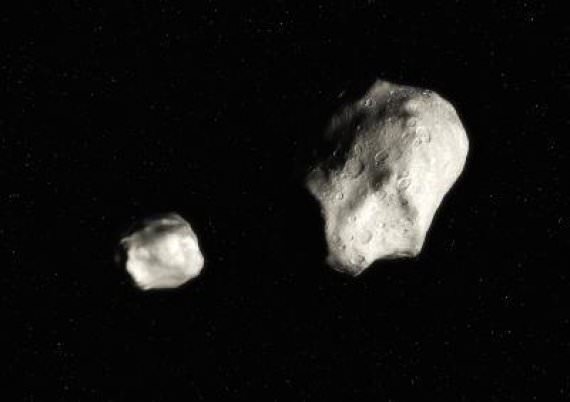[/caption]
Earth got a double dose of close asteroid flybys on Wednesday, April 6, 2011. Two newly discovered small asteroids both passed within the distance of the Moon. 2011 GW9 (10 meters wide) came within half the distance to the Moon, about 192,000 km 12:53 a.m. EDT and 2011 GP28 (6 meters wide) came within 77,000 km (.2 LD) at 3:36 p.m. EDT. Spaceweather.com said the size of these asteroids are two to three times smaller than the Tunguska impactor of 1908, and assured there was no danger of a collision with Earth.


“two to three times smaller than the Tunguska impactor” huh? What does that mean? Did you mean 1/2 to 1/3 the size, because that’s not the same thing. I understand you’re just quoting what spaceweather.com reported, but why quote it if it’s not intelligible?
When you’re talking about increasing mass, volume, length, etc., you have a starting point (zero) from which to start, so two to three times larger (than something else) would make sense, but when you talk about decreasing mass, there is no inherent starting point, and your middle point (the Tunguska impactor) is already vague. It’s estimated to be “a few tens of metres across,” so maybe 20 to 50 or 60 meters wide.
You could have simply stated it was much smaller than the Tunguska impactor, so it wasn’t likely to blow up and level a city-sized chunk of real estate, if that was your point (I didn’t do the math, but that seems to be what you were maybe trying to imply.)
I think that’s being a bit pedantic. When I hear “2 to 3 times smaller”, it is clear to me that “a third to a half the size” is meant.
Harrumph, harrumph, harrumph,… and harrumph.
Pedantry is two to three times more unsavory when delivered with anger.
I would prefer a more gentle style, but in any case the remark is not totally inappropriate. I can infer that it refers to 1/2 – 1/3 the size (in feet/meters) of the object, but it could well be in mass and there is a third power relationship between the two, which makes a big difference.
Well to clarify, the estimated size of 2011 GP28 is approximately 4 to 8 meters across and 2011 GW9 is approximately 6 to 14 meters across. Both are substantially smaller than the estimated size of the Tunguska impactor (40-50 m). Although neither object entered the Earth’s atmosphere during Wednesday’s close approach, it is likely — though definitely not assured — that if they entered our atmosphere they would burn up long before hitting the ground, and with only a fraction of the energy of the Tunguska event.
Just a question for the real experts.
Except for a direct hit, can an object spiral towards Earth or get captured if it moves faster than the orbit speed or escape velocity relative to Earth at that closest distance from earth?
The second question is, the reason why Jupiter can catch objects, is it because Jupiter and the object moves much slower at that distance so have a longer duration gravitational effect on the object? I think that the mass of Jupiter has less influence then the slower moving object and Jupiter.
Can an object with a high eccentricity and crosses Earth’s orbit actually be captured gravitationally by Earth? I am referring to comets, not asteroids that have less eccentricity.